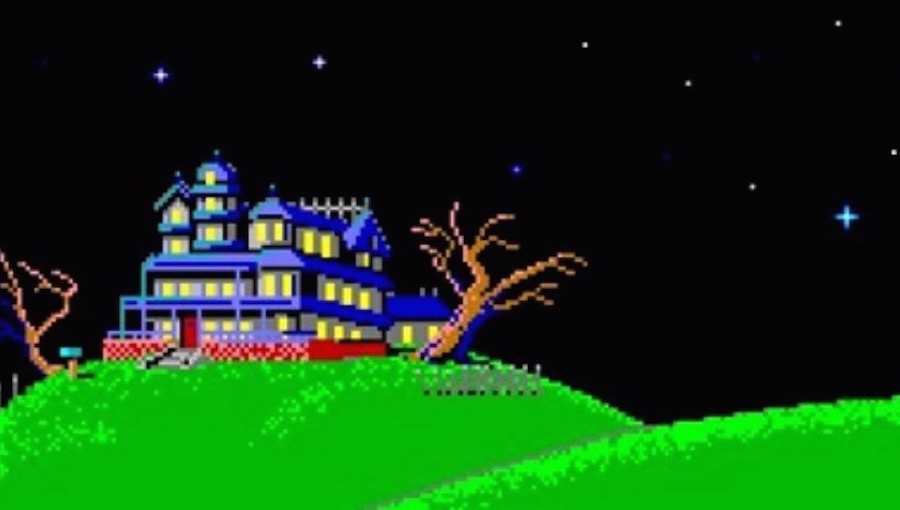As Halloween is fast approaching, the Fanbase Press staff and contributors decided that there was no better way to celebrate this horrifically haunting holiday than by sharing our favorite scary stories! Be they movies, TV shows, video games, novels, or any other form of entertainment, members of the Fanbase Press crew will be sharing their “scariest” stories each day leading up to Halloween. We hope that you will enjoy this sneak peek into the terrors that frighten Fanbase Press!
When it comes to [survival] horror video games, many will point to Resident Evil as being patient zero for the genre to take off. Certainly, post-Resident Evil horror video games allowed the genre to become more mainstream and were solidified with titles such as Fatal Frame, Silent Hill, The Evil Within, Dead Space, and so on. Prior to Resident Evil, there was a smattering of horror video games, on both PC and console, such as Alone in the Dark, Clock Tower, and adaptations of Friday the 13th and Nightmare on Elm Street, but the genre was more or less in its infancy, still developing.

While there is no doubt that Resident Evil had an impact on me in my teenage years, acting as a gateway into the [survival] horror genre, I can’t help but reflect on an earlier title had an even more profound effect on me: the NES port of Maniac Mansion.
Maniac Mansion is a point-and-click adventure game, much in alignment with classic Sierra titles King’s Quest, Space Quest, Leisure Suit Larry, and Lucasarts titles such as Zak McKracken and the Alien Mindbenders and The Secret of Monkey Island (all titles I was familiar with, having played many Sierra games on my 286). Maniac Mansion sees three teenagers (Dave and two others the player selects) break into the titular mansion to rescue Dave’s girlfriend Sandy from Dr. Fred who has kidnapped her under the orders of the purple, slimy meteor, to suck her brains out. The denizens of the house (Dr. Fred, Nurse Edna, Weird Ed, Purple Tentacle, and Green Tentacle) along with intricate puzzles (door security codes hidden in arcade games who need the power turned on, Venus flytraps that need to be grown with radioactive water and then fed soft drinks, and so on) stand in the invading teenagers’ way to rescue Sandy.
While I was familiar with the point-and-click genre, what I wasn’t familiar with was Maniac Mansion being a love letter to classic horror and atomic-age tropes (mad scientists, labs, giant plants, evil meteors, mummies, spooky houses, and so on) mixed in with comedy. Since these references were lost on me, the game instead became jarring with its mix of homage and humor. One minute, I’m walking into a kitchen only to see blood splatter on the walls with a chainsaw with the cutlery (Scary!) followed by a green, disembodied tentacle (Huh?) that you feed wax fruit to (Gwa?) in order to pass by. It was perplexing: light horror references one minute and weird, dark humor the next.
Despite not “getting” these horror references when I initially played the game (circa 1990 – I would’ve been 8/9 years old.), what was really scary about the game was the act of getting caught. As you control the three teenagers in the mansion, the various folks inside the mansion go about their business, as well. Since you can only control one character at a time, you have to be strategic with where you leave each character, for if they are caught by Edna/Fred/Ed, they will be caught and thrown into the mansion’s dungeon. One moment, you’re controlling a character exploring the bathroom, then the music changes and the game cuts away to another character, as Ed happens upon them on his way to check the mail. You got a brief second to try and run away (You will be pursued.) before being caught and dragged away.
These moments were truly terrifying because they were relatable. As a child, horror films were not relatable to me (as I watched them hiding from behind the sofa) because, after all, I was not an oversexed teen trying to get with the prom queen at summer camp. Instead, I was an 8-year-old kid, and what do 8-year-old kids do? Sneak around their own house while their parents are asleep, trying to steal a cookie from the kitchen, or sneaking to closed doors to eavesdrop when their parents are having an argument. These real-life fears of getting caught (and subsequent repercussions) inside the domestic space were at play in Maniac Mansion. I was afraid to have my characters in the game being caught (and interrupting the narrative as now I’d have to conjure up plans to rescue them) in as much as I was afraid of being caught (probably doing something I shouldn’t be doing) and getting in trouble by my parents.
Maniac Mansion was an amazing game. It was able to grip me and suck me into its gameplay, as with each play I was trying different characters and tactics to solve the puzzles within. I vividly recall that after playing Maniac Mansion, I’d grab tablets of graph paper and attempt to draw my own game in the same style. (I had aspirations that when I got older that perhaps I could make my own point-and-click games.) I’d watch the TV series on the Family Channel, trying to figure out how it related to the video game. (Spoiler: It really didn’t.) I’d play its sequel on my best friend’s computer, and while the sequel was amazing in its own right, gone were the horror and getting caught elements and in its stead was a straightforward wacky adventure game. Within the greater gaming canon, Maniac Mansion was heralded as a milestone, as well, perhaps not as a horror game (as Resident Evil would later be) but for ushering in the point-and-click genre.

